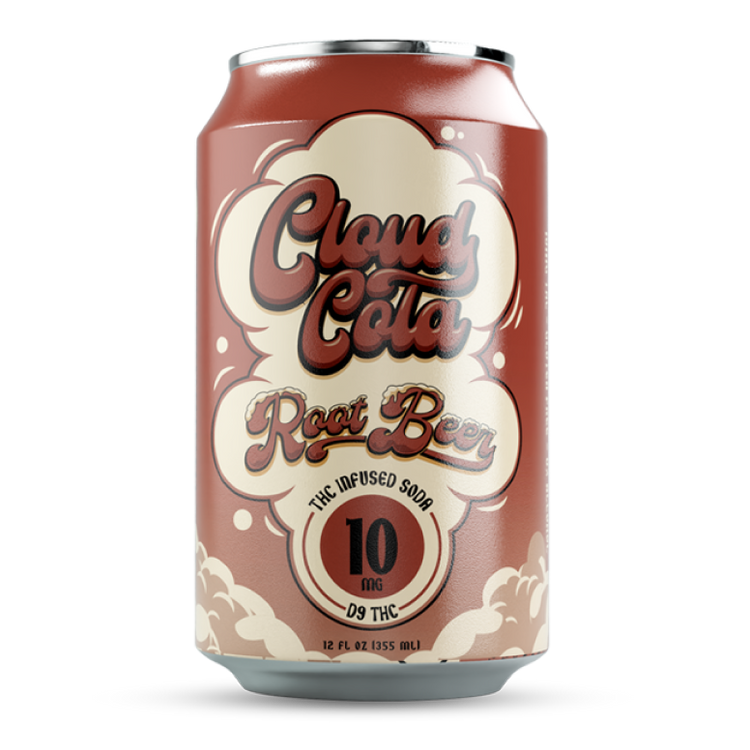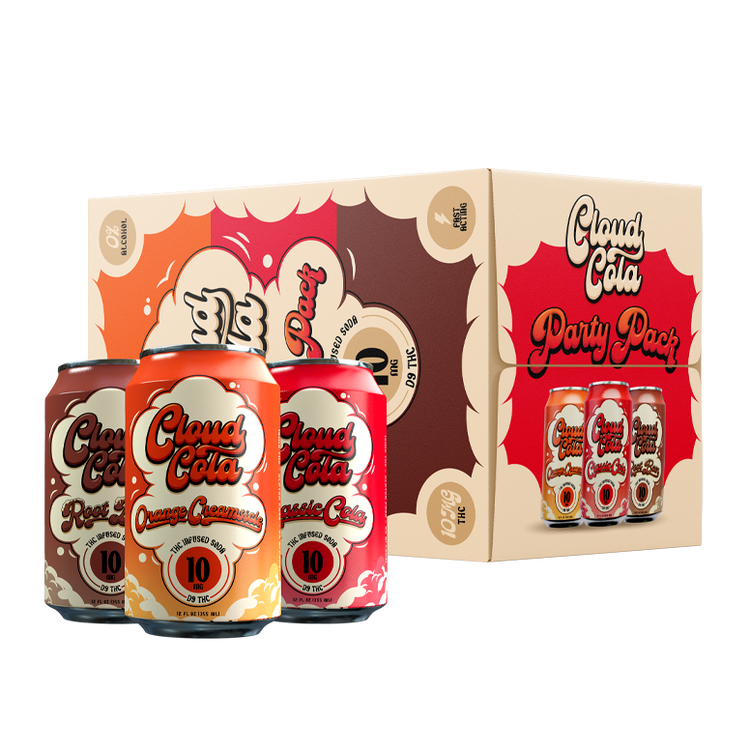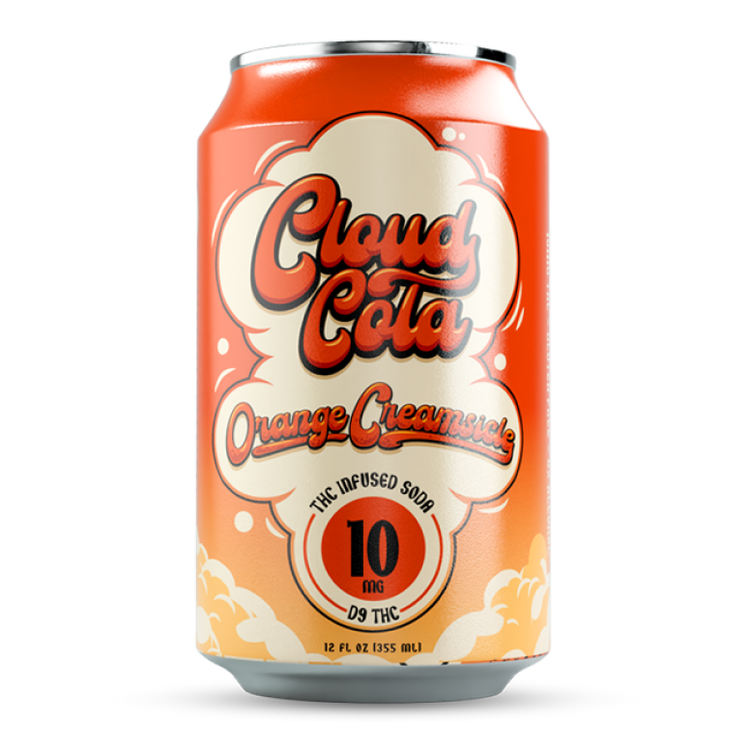THC Dosage and Bioavailability
Determining the potency of cannabis products can be tricky, especially when comparing different consumption methods. THC dosage and bioavailability play crucial roles in how strongly a person experiences the effects of cannabis. Bioavailability refers to the amount of THC that actually enters the bloodstream and becomes psychoactive. This can vary significantly depending on factors like ingestion method, individual metabolism, and product formulation.
Factors Affecting THC Absorption

THC seltzer and cannabis edibles both deliver THC orally, but their bioavailability differs considerably. Edibles undergo extensive first-pass metabolism in the liver, resulting in lower overall bioavailability compared to inhalation or sublingual administration. Factors influencing THC absorption from edibles include consumption speed, fat content of the food consumed alongside it, and individual gut microbiome composition. Seltzers, on the other hand, bypass first-pass metabolism due to rapid absorption under the tongue. This can lead to faster onset of effects and potentially higher bioavailability, making seltzers appear more potent than edibles initially.

Comparison of THC Levels in Seltzers vs. Edibles

Determining the potency of cannabis products can be tricky, especially when comparing different consumption methods. THC dosage and bioavailability play crucial roles in how strongly a person experiences the effects of cannabis. Bioavailability refers to the amount of THC that actually enters the bloodstream and becomes psychoactive. This can vary significantly depending on factors like ingestion method, individual metabolism, and product formulation.
THC seltzer and cannabis edibles both deliver THC orally, but their bioavailability differs considerably. Edibles undergo extensive first-pass metabolism in the liver, resulting in lower overall bioavailability compared to inhalation or sublingual administration. Factors influencing THC absorption from edibles include consumption speed, fat content of the food consumed alongside it, and individual gut microbiome composition. Seltzers, on the other hand, bypass first-pass metabolism due to rapid absorption under the tongue. This can lead to faster onset of effects and potentially higher bioavailability, making seltzers appear more potent than edibles initially.
While seltzers might seem more potent due to their faster onset and potentially higher bioavailability, it’s essential to remember that edibles generally have a longer-lasting effect. The lower initial bioavailability of edibles doesn’t necessarily mean they are less potent overall; it simply means the effects are felt differently.
- THC seltzers offer rapid absorption under the tongue, bypassing first-pass metabolism and potentially leading to faster onset and higher bioavailability.
- Cannabis edibles undergo extensive first-pass metabolism in the liver, resulting in lower bioavailability compared to other ingestion methods.
- Factors like consumption speed, fat content of consumed food, and individual gut microbiome composition influence THC absorption from edibles.
Metabolic Processing and Onset Effects
Understanding the difference between how THC seltzers and edibles are processed by the body is key to understanding their perceived potency. This metabolic journey impacts both the onset of effects and the overall bioavailability of THC, ultimately influencing the user’s experience.
Effect of Digestion on Edibles
Metabolic processing significantly influences how potent cannabis products feel. Edibles, ingested orally, go through a process called first-pass metabolism in the liver before reaching the bloodstream. This means a portion of the THC is broken down by the liver, reducing the amount that becomes psychoactive.
Several factors impact this process for edibles, including how quickly they are consumed, the fat content of accompanying food, and individual variations in gut microbiome composition. The slower onset of effects from edibles often stems from this extensive first-pass metabolism. THC seltzers, on the other hand, bypass this liver filtration due to their rapid absorption under the tongue.
This sublingual absorption leads to faster-acting effects and potentially higher bioavailability compared to edibles.
Rapid Absorption of THC from Seltzers
Determining the potency of cannabis products can be tricky, especially when comparing different consumption methods. THC dosage and bioavailability play crucial roles in how strongly a person experiences the effects of cannabis. Bioavailability refers to the amount of THC that actually enters the bloodstream and becomes psychoactive. This can vary significantly depending on factors like ingestion method, individual metabolism, and product formulation.
THC seltzer and cannabis edibles both deliver THC orally, but their bioavailability differs considerably. Edibles undergo extensive first-pass metabolism in the liver, resulting in lower overall bioavailability compared to inhalation or sublingual administration. Factors influencing THC absorption from edibles include consumption speed, fat content of the food consumed alongside it, and individual gut microbiome composition. Seltzers, on the other hand, bypass first-pass metabolism due to rapid absorption under the tongue. This can lead to faster onset of effects and potentially higher bioavailability, making seltzers appear more potent than edibles initially.
- THC seltzers offer rapid absorption under the tongue, bypassing first-pass metabolism and potentially leading to faster onset and higher bioavailability.
- Cannabis edibles undergo extensive first-pass metabolism in the liver, resulting in lower bioavailability compared to other ingestion methods.
- Factors like consumption speed, fat content of consumed food, and individual gut microbiome composition influence THC absorption from edibles.
Understanding the difference between how THC seltzers and edibles are processed by the body is key to understanding their perceived potency. This metabolic journey impacts both the onset of effects and the overall bioavailability of THC, ultimately influencing the user’s experience.
Individual Variability and Tolerance
Individual variability in metabolism plays a significant role in how people experience the effects of cannabis. Factors such as gut microbiome composition, liver function, and body mass can all influence how the body processes THC, the psychoactive compound in cannabis.
Influence of Body Mass and Metabolism
Individual variability in metabolism plays a significant role in how people experience the effects of cannabis. Factors such as gut microbiome composition, liver function, and body mass can all influence how the body processes THC, the psychoactive compound in cannabis.
- Body Mass: Individuals with higher body mass generally have a greater volume of fat tissue. THC is lipophilic (fat-soluble), meaning it tends to accumulate in fatty tissues. This can lead to prolonged effects and potentially higher overall exposure to THC in individuals with higher body mass.
- Metabolism: Variations in metabolic rate can influence how quickly the liver breaks down THC. Individuals with faster metabolisms may process THC more efficiently, leading to shorter-lasting effects compared to those with slower metabolisms.
- Gut Microbiome: The trillions of bacteria residing in the gut play a role in metabolizing compounds, including THC. Differences in gut microbiome composition can affect the breakdown and absorption of THC, potentially influencing the intensity and duration of its effects.
Tolerance Development and Potency Perception
Determining the potency of cannabis products can be tricky, especially when comparing different consumption methods. THC dosage and bioavailability play crucial roles in how strongly a person experiences the effects of cannabis. Bioavailability refers to the amount of THC that actually enters the bloodstream and becomes psychoactive. This can vary significantly depending on factors like ingestion method, individual metabolism, and product formulation.
THC seltzer and cannabis edibles both deliver THC orally, but their bioavailability differs considerably. Edibles undergo extensive first-pass metabolism in the liver, resulting in lower overall bioavailability compared to inhalation or sublingual administration. Factors influencing THC absorption from edibles include consumption speed, fat content of the food consumed alongside it, and individual gut microbiome composition. Seltzers, on the other hand, bypass first-pass metabolism due to rapid absorption under the tongue. This can lead to faster onset of effects and potentially higher bioavailability, making seltzers appear more potent than edibles initially.
- THC seltzers offer rapid absorption under the tongue, bypassing first-pass metabolism and potentially leading to faster onset and higher bioavailability.
- Cannabis edibles undergo extensive first-pass metabolism in the liver, resulting in lower bioavailability compared to other ingestion methods.
- Factors like consumption speed, fat content of consumed food, and individual gut microbiome composition influence THC absorption from edibles.
Individual variability in metabolism plays a significant role in how people experience the effects of cannabis. Factors such as gut microbiome composition, liver function, and body mass can all influence how the body processes THC, the psychoactive compound in cannabis.
- Body Mass: Individuals with higher body mass generally have a greater volume of fat tissue. THC is lipophilic (fat-soluble), meaning it tends to accumulate in fatty tissues. This can lead to prolonged effects and potentially higher overall exposure to THC in individuals with higher body mass.
- Metabolism: Variations in metabolic rate can influence how quickly the liver breaks down THC. Individuals with faster metabolisms may process THC more efficiently, leading to shorter-lasting effects compared to those with slower metabolisms.
- Gut Microbiome: The trillions of bacteria residing in the gut play a role in metabolizing compounds, including THC. Differences in gut microbiome composition can affect the breakdown and absorption of THC, potentially influencing the intensity and duration of its effects.
Understanding these factors is crucial for individuals using cannabis to manage their consumption and predict their experience.
Potential Risks and Considerations
While comparing the potency of THC seltzers and edibles might seem straightforward, several key considerations complicate the equation.
Overconsumption Risks with Seltzers
Overconsumption is a risk with any form of cannabis consumption, including seltzers and edibles. Because seltzers are absorbed quickly and may lead to faster onset effects, it’s easier to accidentally consume more THC than intended. Edibles, on the other hand, can have a delayed onset, meaning it takes longer to feel the full effects. This delayed response can lead individuals to eat more, potentially resulting in overconsumption later.
The variability in bioavailability, metabolism, and individual tolerance levels adds another layer of complexity. What might be a moderate dose for one person could be too strong for another. It’s essential to start with a low dose, especially when trying a new product or method of consumption, and gradually increase the amount as needed.
It’s crucial to be aware of your body’s response and avoid consuming more until you feel the effects of the initial dose.
Edibles and Delayed Onset
Potential risks associated with THC seltzers and edibles include overconsumption, delayed onset with edibles leading to potential overconsumption later, and individual variability in tolerance and metabolism. Starting with a low dose and gradually increasing it is crucial for both types of products, allowing individuals to gauge their response and avoid negative experiences.
Cloud Cola THC sparkling drink – order today
- Forehead Frown Lines Treatment Near Richmond, Surrey - May 12, 2025
- How Polyamory Can Strengthen Emotional Resilience In Relationships - May 12, 2025
- The Future Of THC Beverages In The US Beverage Industry - May 12, 2025
